Simulation Standard
Technical Journal
A Journal for Process and Device Engineers
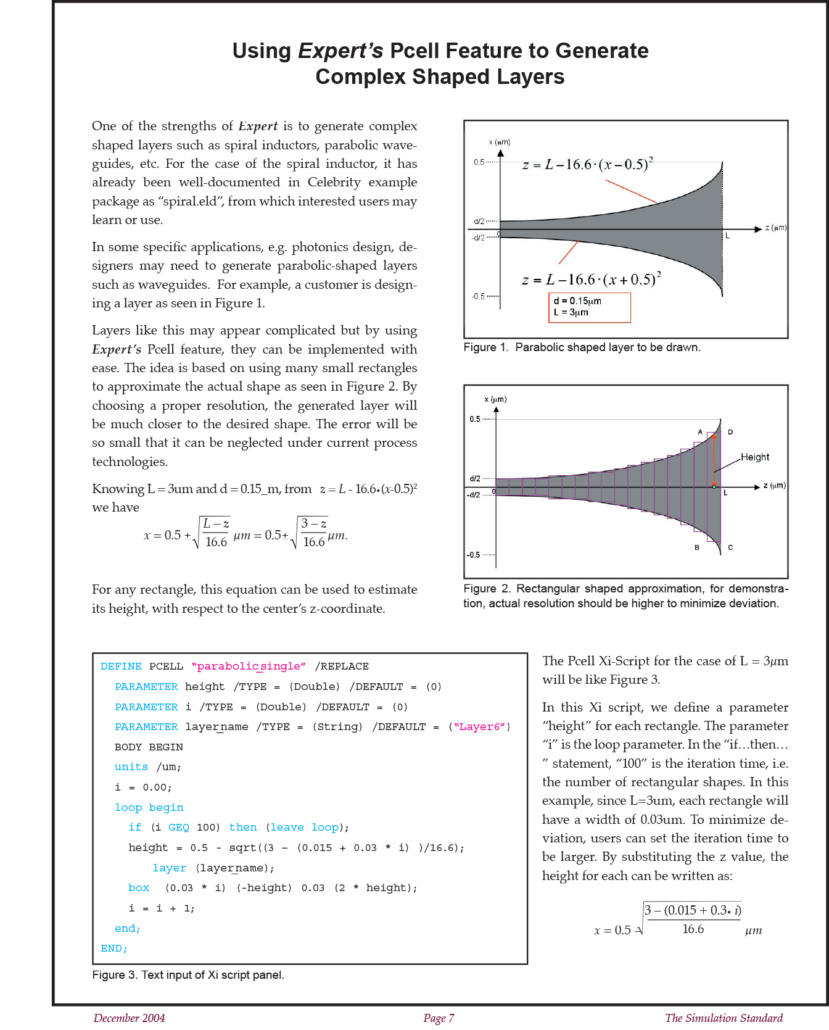
Using Expert’s Pcell Feature to Generate Complex Shaped Layers
One of the strengths of Expert is to generate complex shaped layers such as spiral inductors, parabolic waveguides, etc. For the case of the spiral inductor, it has already been well-documented in CELEBRITY example package as “spiral.eld”, from which interested users may learn or use.
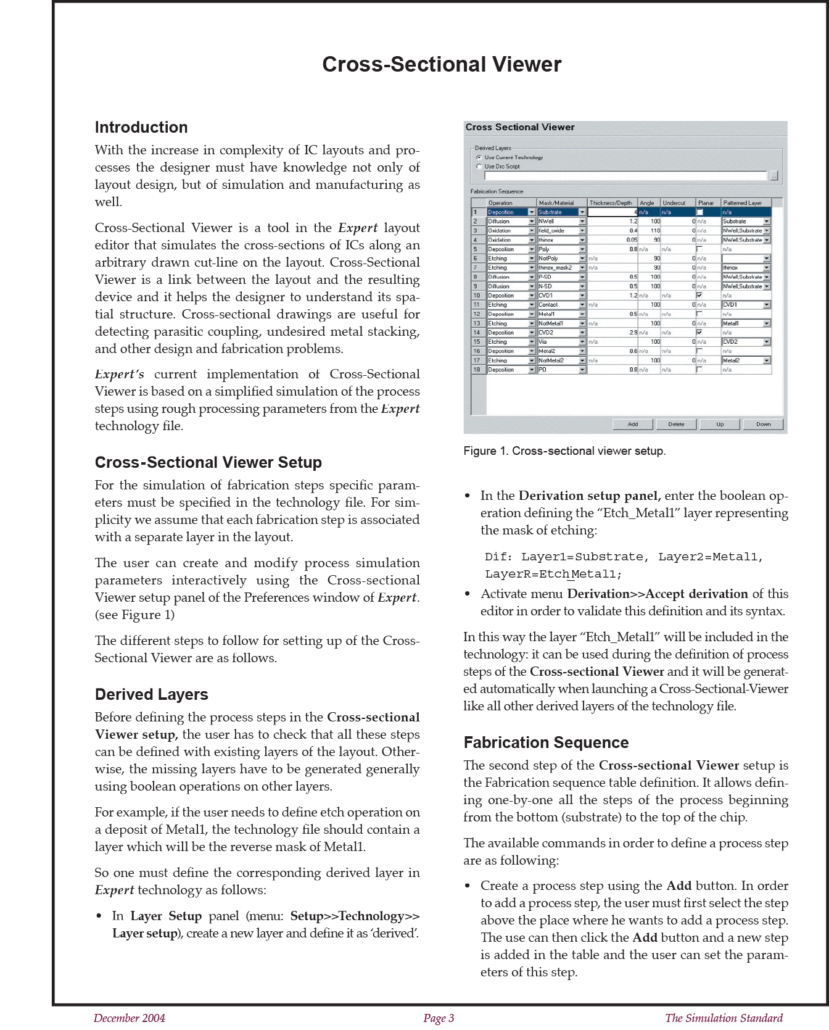
Cross-Sectional Viewer
Cross-Sectional Viewer is a tool in the Expert layout editor that simulates the cross-sections of ICs along an arbitrary drawn cut-line on the layout. Cross-Sectional Viewer is a link between the layout and the resulting device and it helps the designer to understand its spatial structure. Cross-sectional drawings are useful for detecting parasitic coupling, undesired metal stacking, and other design and fabrication problems.
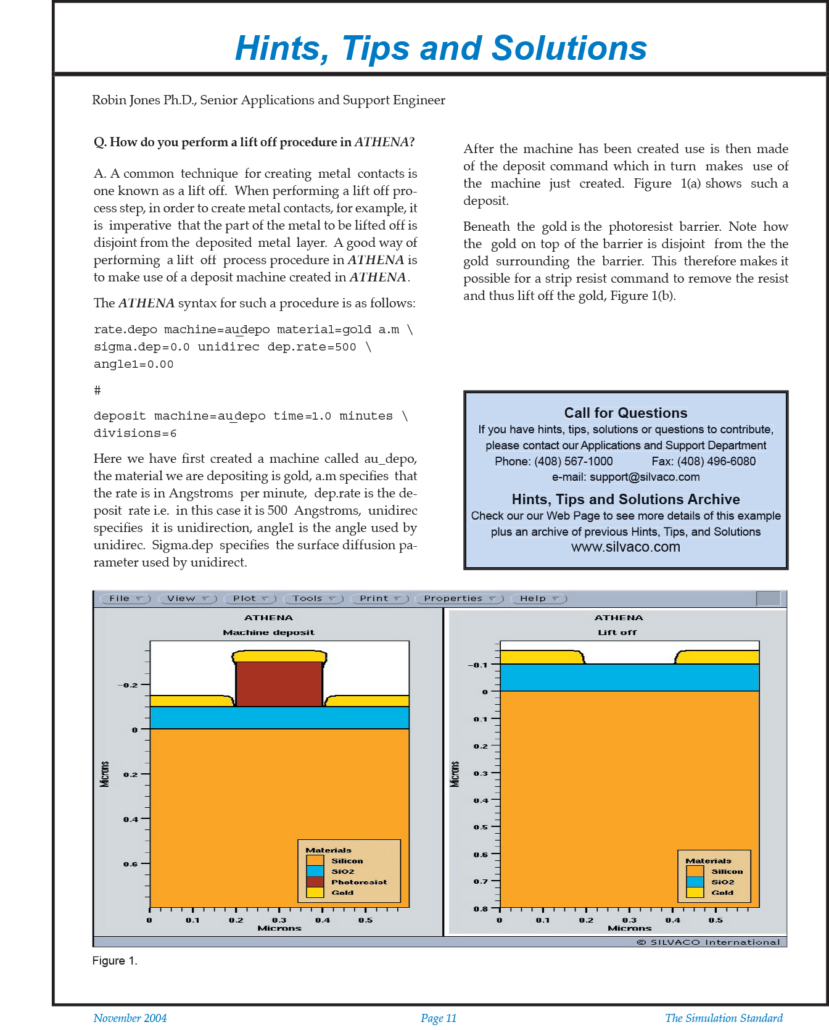
How do you perform a lift off procedure in ATHENA?
A common technique for creating metal contacts is one known as a lift off. When performing a lift off process step, in order to create metal contacts, for example, it is imperative that the part of the metal to be lifted off is disjoint from the deposited metal layer. A good way of performing a lift off process procedure in ATHENA is to make use of a deposit machine created in ATHENA.
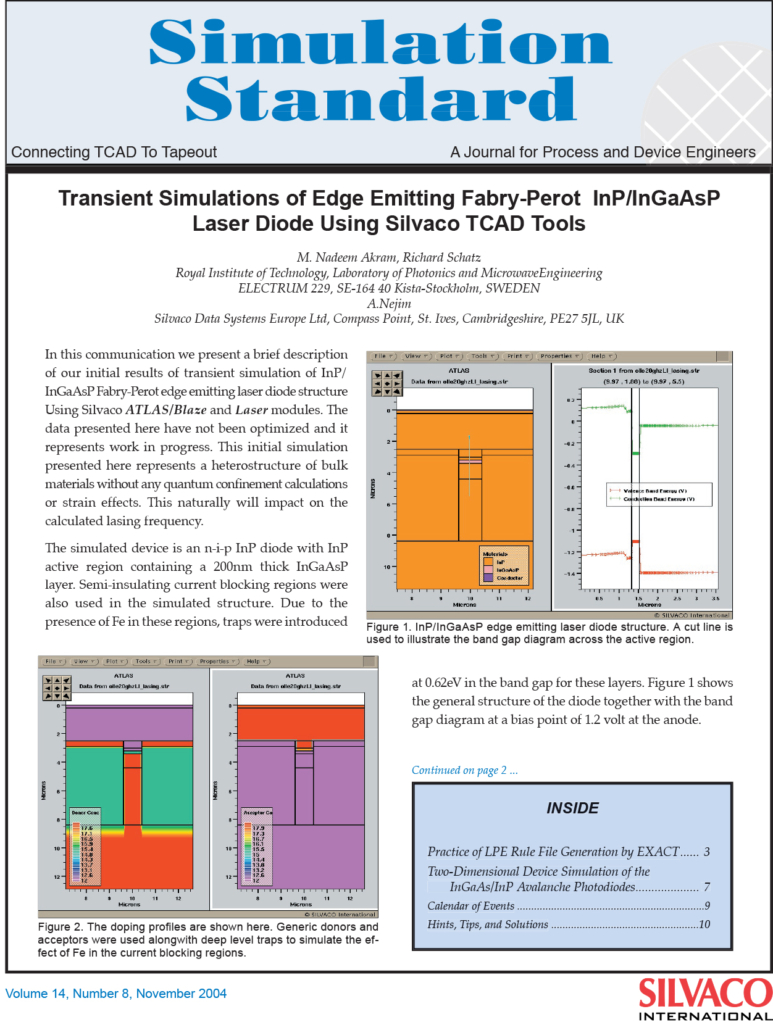
Transient Simulations of Edge Emitting Fabry-Perot InP/InGaAsP Laser Diode Using Silvaco TCAD Tools
In this communication we present a brief description of our initial results of transient simulation of InP/InGaAsP Fabry-Perot edge emitting laser diode structure Using Silvaco ATLAS/Blaze and Laser modules. The data presented here have not been optimized and it represents work in progress. This initial simulation presented here represents a heterostructure of bulk materials without any quantum confinement calculations or strain effects. This naturally will impact on the calculated lasing frequency.
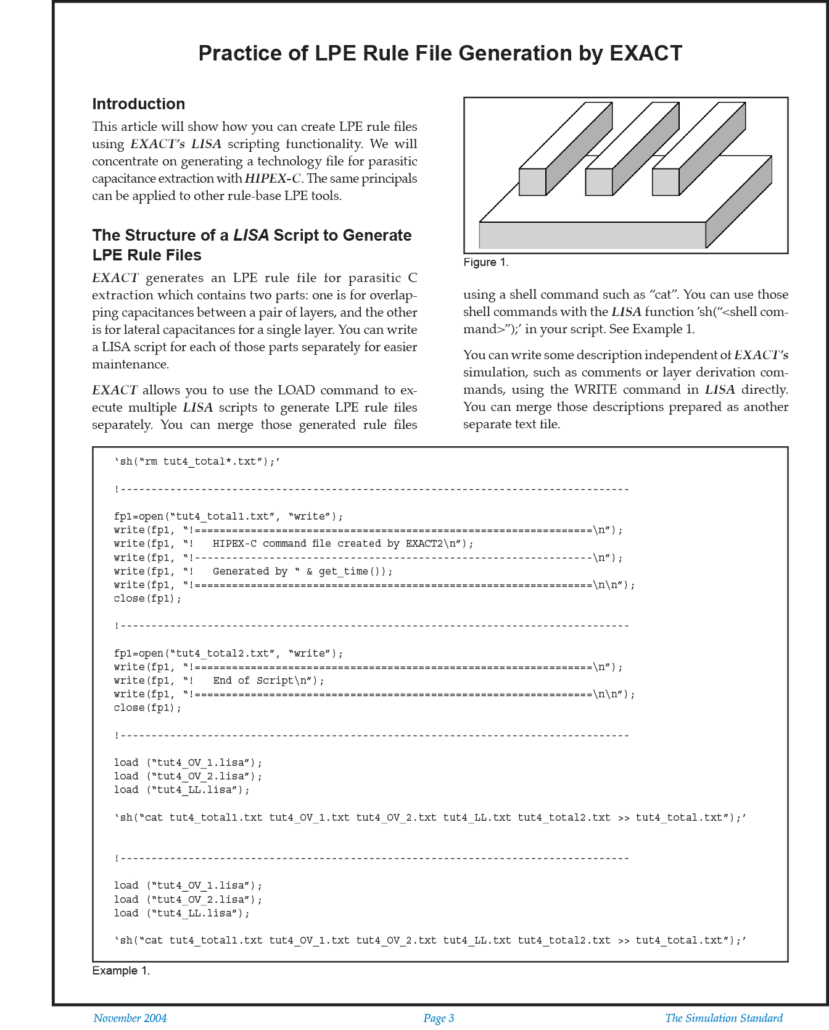
Practice of LPE Rule File Generation by Exact
This article will show how you can create LPE rule files using EXACT’s LISA scripting functionality. We will concentrate on generating a technology file for parasitic capacitance extraction with HIPEX-C. The same principals can be applied to other rule-base LPE tools.
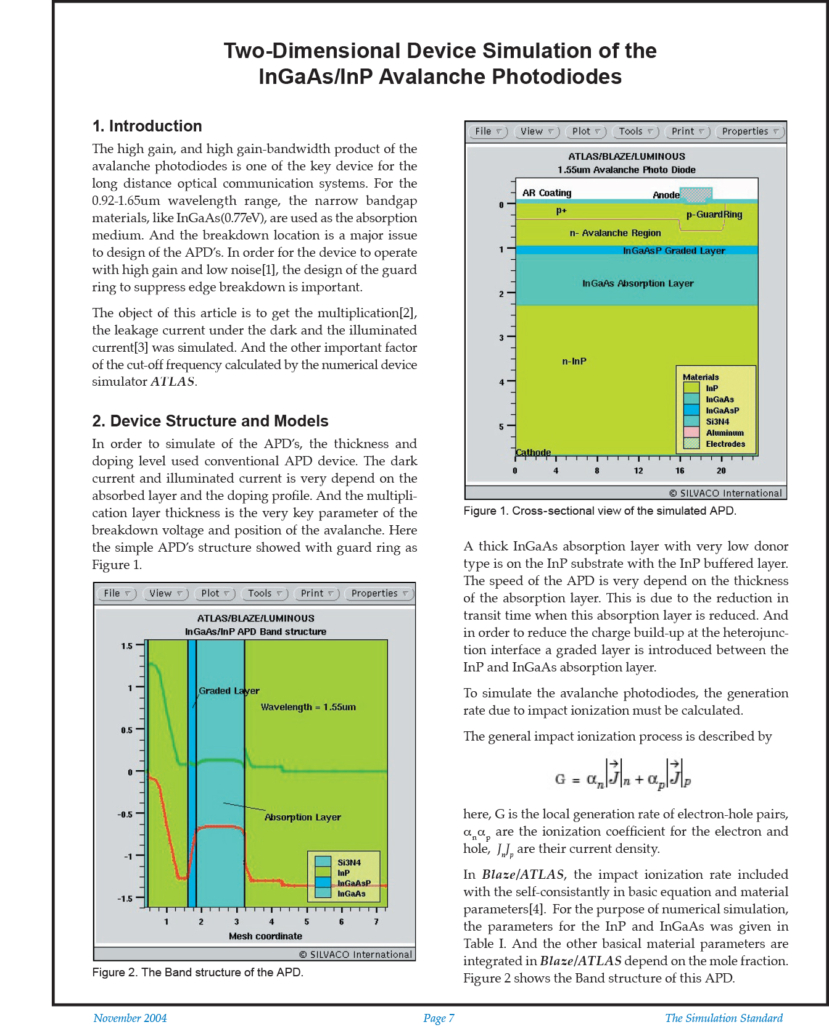
Two-Dimensional Device Simulation of the InGaAs/InP Avalanche Photodiodes
The high gain, and high gain-bandwidth product of the avalanche photodiodes is one of the key device for the long distance optical communication systems. For the 0.92-1.65um wavelength range, the narrow bandgap materials, like InGaAs(0.77eV), are used as the absorption medium. And the breakdown location is a major issue to design of the APD’s. In order for the device to operate with high gain and low noise[1], the design of the guard ring to suppress edge breakdown is important.

